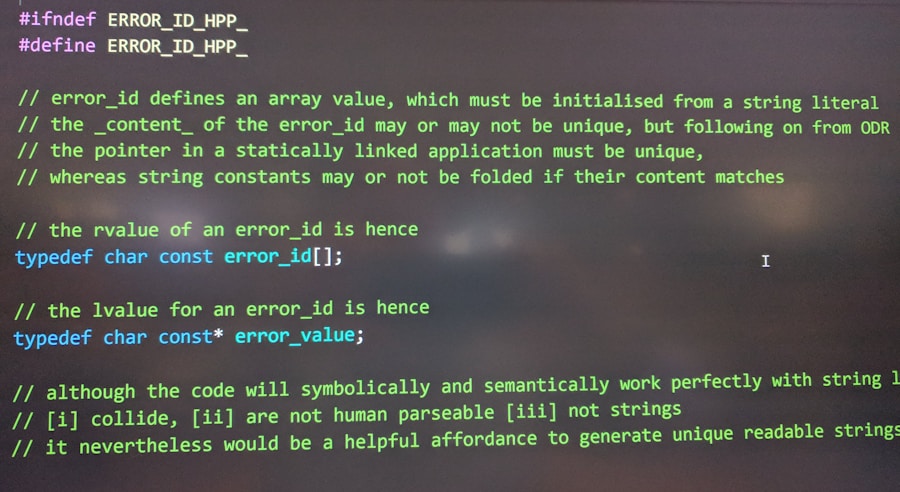Natural Language Processing (NLP) is a subfield of artificial intelligence that focuses on the interaction between computers and human language. It encompasses a range of techniques and methodologies that enable machines to understand, interpret, and generate human language in a way that is both meaningful and contextually relevant. At its core, NLP aims to bridge the gap between human communication and computer understanding, allowing for more intuitive interactions with technology.
This involves not only the parsing of text but also the comprehension of nuances such as sentiment, intent, and context. The evolution of NLP has been significantly influenced by advancements in computational linguistics, machine learning, and deep learning. Early approaches relied heavily on rule-based systems that required extensive manual programming to handle specific language tasks.
However, the advent of machine learning algorithms has transformed NLP by enabling systems to learn from vast amounts of data. This shift has led to the development of sophisticated models capable of performing complex tasks such as language translation, sentiment analysis, and even conversational agents like chatbots. As a result, NLP has become an integral part of many applications that we encounter daily, from virtual assistants to customer service automation.
Key Takeaways
- NLP AI involves the use of technology to understand and interpret human language, enabling machines to process, analyze, and generate natural language.
- NLP AI has applications in industries such as healthcare, finance, customer service, and marketing, where it is used for sentiment analysis, language translation, and chatbots.
- Challenges and limitations of NLP AI include language ambiguity, cultural nuances, and the need for large amounts of training data for accurate language processing.
- Machine learning techniques such as deep learning and neural networks are enhancing NLP AI by improving language understanding, translation, and speech recognition.
- The future of NLP AI includes advancements in language generation, emotion recognition, and personalized language models, leading to more natural and human-like interactions.
The Applications of NLP AI in Various Industries
Healthcare Advancements
In the healthcare sector, NLP is utilized to analyze patient records and extract valuable insights from unstructured data. By processing clinical notes and medical literature, NLP systems can assist healthcare professionals in diagnosing conditions more accurately and identifying potential treatment options. Moreover, NLP-driven chatbots are increasingly being deployed in telemedicine to provide patients with immediate responses to their inquiries, thereby streamlining the patient experience.
Financial Insights
In the realm of finance, NLP plays a crucial role in sentiment analysis for market predictions. Financial institutions employ NLP algorithms to sift through news articles, social media posts, and earnings reports to gauge public sentiment regarding stocks or economic conditions. This information can be pivotal for traders and investors looking to make informed decisions based on market trends.
Fraud Detection and Prevention
Additionally, NLP is used in fraud detection systems to analyze transaction patterns and flag suspicious activities by interpreting textual data from various sources.
Challenges and Limitations of NLP AI

Despite its remarkable advancements, NLP AI faces several challenges and limitations that hinder its effectiveness in certain contexts. One significant challenge is the ambiguity inherent in human language. Words can have multiple meanings depending on context, and idiomatic expressions can be particularly difficult for machines to interpret accurately.
For example, the phrase “kick the bucket” is an idiom meaning to die, but a literal interpretation would lead to confusion. This ambiguity can result in misinterpretations that affect the reliability of NLP applications. Another limitation lies in the quality and diversity of training data used to develop NLP models.
Many existing models are trained on datasets that may not adequately represent the full spectrum of human language, leading to biases in understanding and generating text. For instance, if a model is primarily trained on formal written language, it may struggle with informal speech or dialects. Furthermore, ethical concerns arise when considering how these biases can perpetuate stereotypes or misinformation in applications such as hiring algorithms or content moderation systems.
Enhancing NLP AI with Machine Learning
| Metrics | Value |
|---|---|
| Accuracy | 92% |
| Precision | 88% |
| Recall | 94% |
| F1 Score | 90% |
| Training Time | 3 hours |
| Inference Time | 20 milliseconds |
Machine learning has been a game-changer for enhancing the capabilities of NLP AI. Traditional rule-based approaches often fell short in handling the complexities of human language; however, machine learning algorithms can learn from vast datasets and improve their performance over time. Techniques such as supervised learning, unsupervised learning, and reinforcement learning have all contributed to the advancement of NLP applications.
For instance, supervised learning allows models to be trained on labeled datasets where input-output pairs are provided, enabling them to learn specific tasks like sentiment classification or named entity recognition. Deep learning, a subset of machine learning that utilizes neural networks with multiple layers, has particularly revolutionized NLP. Models like Long Short-Term Memory (LSTM) networks and Transformers have demonstrated exceptional performance in tasks such as language translation and text generation.
The Transformer architecture, introduced in the paper “Attention is All You Need,” has become foundational for many state-of-the-art NLP models like BERT (Bidirectional Encoder Representations from Transformers) and GPT (Generative Pre-trained Transformer). These models leverage attention mechanisms to understand context better and generate coherent text, significantly improving the quality of machine-generated language.
The Future of NLP AI: Advancements and Innovations
The future of NLP AI is poised for remarkable advancements driven by ongoing research and technological innovations. One area of focus is the development of more context-aware models that can understand subtleties in language beyond mere word associations. Researchers are exploring ways to incorporate world knowledge into NLP systems so that they can make more informed decisions based on real-world contexts.
This could lead to applications that not only respond accurately but also engage users in more meaningful conversations. Another promising direction is the integration of multimodal data into NLP systems. By combining text with other forms of data such as images or audio, these systems can achieve a more holistic understanding of communication.
For example, an NLP model that analyzes social media posts alongside accompanying images could provide deeper insights into public sentiment during events like protests or product launches. Furthermore, advancements in transfer learning are enabling models trained on one task to be adapted for another with minimal additional training, making it easier to deploy NLP solutions across various domains.
Ethical Considerations in NLP AI Development

As NLP AI continues to evolve, ethical considerations surrounding its development and deployment have become increasingly critical. One major concern is the potential for bias in language models, which can arise from the datasets used for training. If these datasets reflect societal biases—whether related to race, gender, or socioeconomic status—NLP systems may inadvertently perpetuate these biases in their outputs.
This raises questions about fairness and accountability in applications such as hiring tools or law enforcement surveillance systems. Moreover, privacy issues are paramount when dealing with sensitive data in NLP applications. The use of personal information for training models necessitates stringent data protection measures to ensure compliance with regulations like GDPR (General Data Protection Regulation).
Developers must prioritize transparency in how data is collected and used while also implementing robust security protocols to safeguard user information. As society grapples with these ethical dilemmas, it becomes essential for stakeholders—including researchers, policymakers, and industry leaders—to collaborate on establishing guidelines that promote responsible AI development.
Implementing NLP AI in Business and Everyday Life
The implementation of NLP AI in business settings has transformed how organizations operate and interact with customers. Companies are increasingly adopting chatbots powered by NLP technology to handle customer inquiries efficiently. These virtual assistants can provide instant responses to frequently asked questions, freeing up human agents to focus on more complex issues.
For instance, e-commerce platforms utilize chatbots not only for customer support but also for personalized product recommendations based on user preferences. In everyday life, NLP AI has permeated various aspects of our routines through applications like voice-activated assistants such as Amazon’s Alexa or Apple’s Siri. These tools allow users to perform tasks hands-free—whether it’s setting reminders, playing music, or controlling smart home devices—by simply using natural language commands.
The convenience offered by these technologies exemplifies how NLP AI enhances user experiences by making interactions with devices more intuitive and accessible.
How NLP AI is Revolutionizing Communication and Information Retrieval
NLP AI is fundamentally changing how we communicate and retrieve information in an increasingly digital world. Search engines have become more sophisticated thanks to advancements in NLP; they now understand user queries better than ever before by interpreting intent rather than relying solely on keyword matching. This shift allows users to find relevant information more quickly and accurately, enhancing their overall search experience.
Moreover, social media platforms leverage NLP algorithms to curate content based on user interests and preferences. By analyzing posts and interactions, these platforms can deliver personalized feeds that resonate with individual users while also identifying trends within communities. Additionally, sentiment analysis tools enable businesses to monitor public perception regarding their brands or products by analyzing social media conversations in real-time.
This capability not only aids in reputation management but also informs marketing strategies by providing insights into consumer behavior. In summary, Natural Language Processing AI represents a dynamic intersection of technology and human communication that continues to evolve rapidly across various domains. Its applications span industries from healthcare to finance while facing challenges related to ambiguity and bias.
As machine learning enhances its capabilities further, ethical considerations remain paramount in ensuring responsible development practices. The future promises exciting advancements that will continue to revolutionize how we communicate and interact with information in our daily lives.












Leave a Reply